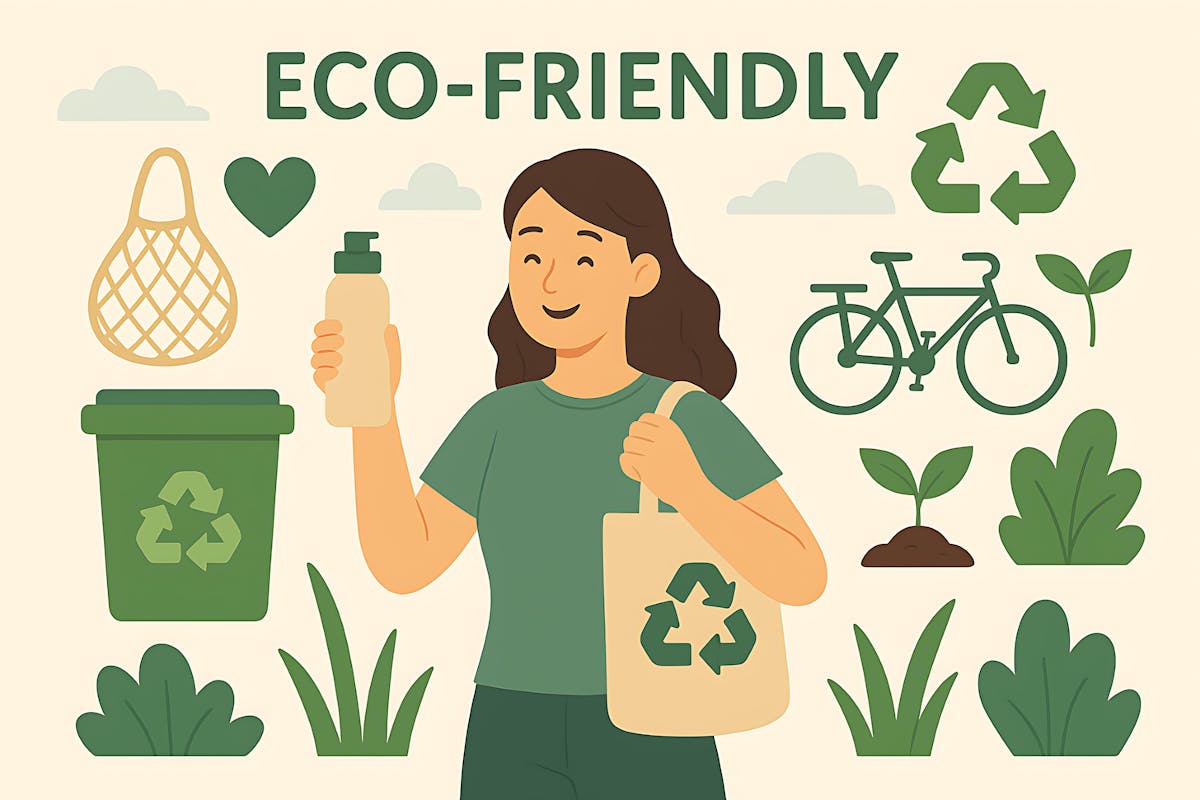Creating an Eco-Friendly Lifestyle

In recent years, environmental sustainability has become more urgent than ever. Pollution, resource depletion, and excessive amounts of single-use plastics are just some of the challenges our planet faces. As individuals, we have the power to make a significant impact by adopting an eco-friendly lifestyle.
Whether you’re looking to reduce your carbon footprint, conserve resources, or support sustainable practices, making small changes in your daily habits can lead to a healthier planet for future generations. Here are some simple steps to help you create an eco-friendly lifestyle.
Tips for Living a Greener Lifestyle
1. Reduce, Reuse, Recycle
One of the most effective ways to live sustainably is to focus on reducing waste. Start by evaluating your consumption habits. Before buying something new, ask yourself if it’s necessary. If it is, opt for durable, high-quality products that will last longer, decreasing the need for constant replacements.
Look for items that can be reused or repurposed. For example, invest in reusable grocery and produce bags, glass containers, and refillable water bottles to cut down on single-use plastics. If you’re cleaning out your home, donate or find other uses for items instead of throwing them away. This helps not only minimize waste but also conserve resources.
Finally, make recycling a regular habit. Check your local recycling guidelines to understand what can and cannot be recycled. By separating recyclable materials like paper, glass, and plastic, you help ensure that these items get processed correctly and prevent them from ending up in landfills.
2. Energy Efficiency
Reducing energy consumption is another key aspect of living an eco-friendly lifestyle. Start by switching to energy-efficient appliances, such as LED light bulbs and Energy Star–rated refrigerators and washing machines. These devices use less electricity and can save you money on your utility bills over time.
Consider upgrading your home’s insulation to improve energy efficiency, which will keep your home cooler in the summer and warmer in the winter without relying on excessive heating or air conditioning. Programmable thermostats are also a great investment—they allow you to control the temperature in your home more precisely and prevent unnecessary energy use.
If possible, explore renewable energy options, such as solar panels or wind energy. While initial installation costs can be high, they often pay off in the long run by reducing reliance on fossil fuels and lowering electricity bills.
3. Sustainable Transportation
Transportation is one of the largest contributors to carbon emissions, but there are many ways to get around without worsening your environmental impact. If possible, choose public transportation, walk, or ride a bike. Not only do these options shrink your carbon footprint, but they also offer health benefits, such as improved cardiovascular fitness.
For longer trips, consider carpooling or using ride-sharing services to limit the number of vehicles on the road. If you’re in the market for a new car, look into electric vehicles (EVs) or hybrid options, which produce fewer emissions than traditional gasoline-powered vehicles.
4. Water Conservation
Water is a precious resource that is often taken for granted. To conserve water, make small changes in your daily habits. Install low-flow shower heads and faucets, which reduce water usage without compromising functionality. Be mindful of your water consumption when washing dishes, doing laundry, or watering plants. Run the dishwasher and washing machine only with full loads to avoid wasting water.
If you live in an area with frequent droughts, consider collecting rainwater for outdoor use. This simple practice can help make you less reliant on municipal water systems and save money on water bills.
Bookmark the Life Protect 24/7 Blog
If you found this article to be of interest, we invite you to bookmark this blog and visit often. Each week, we post new resources on topics ranging from nutrition and fitness activities to senior living and healthy aging.